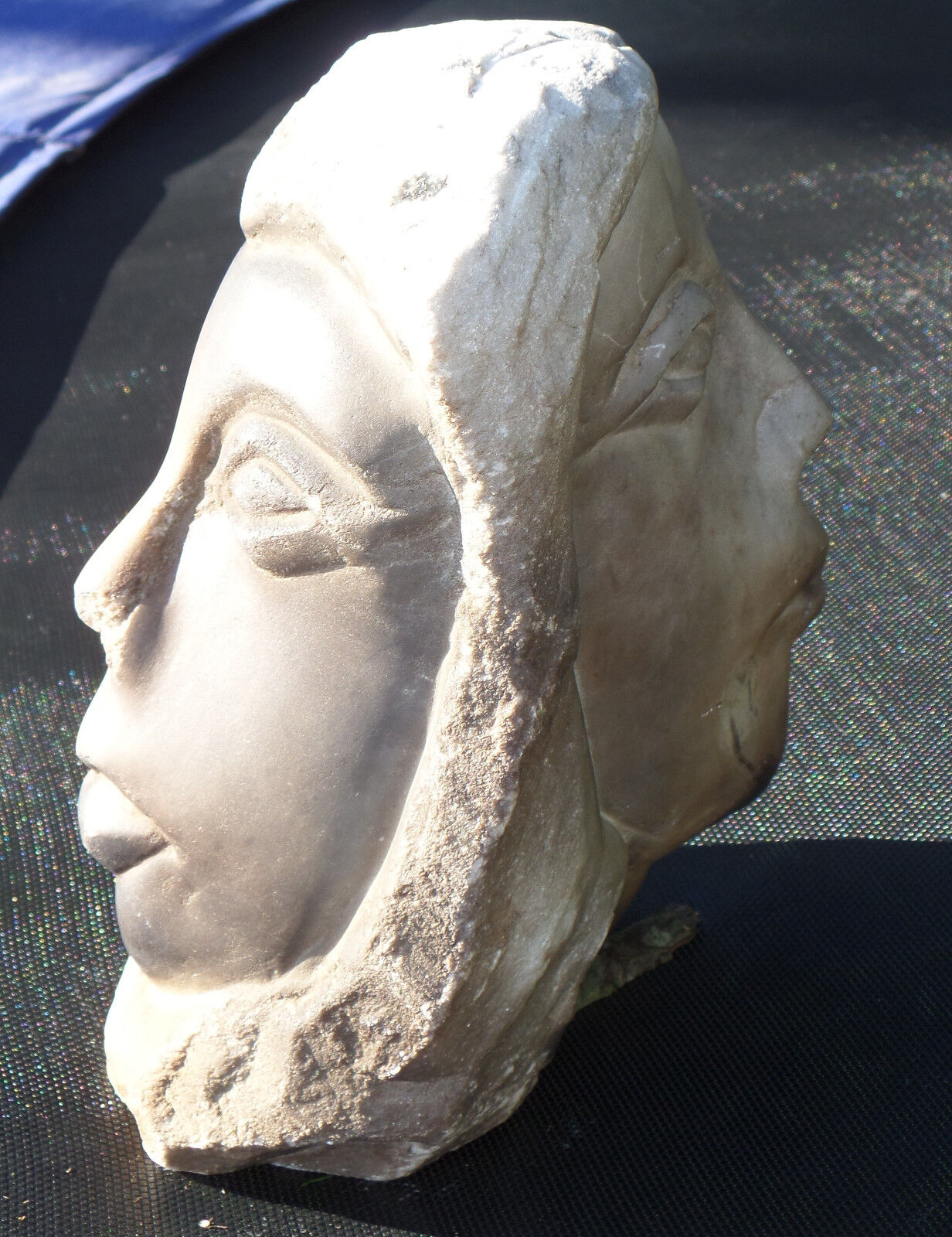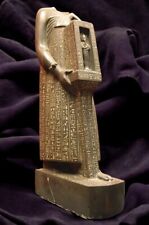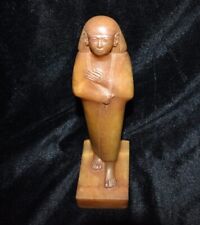Ancient 26 lbs. Roman Marble Head of Janus--Two Faced God Sicily, 200 BC-300 AD

When you click on links to various merchants on this site and make a purchase, this can result in this site earning a commission. Affiliate programs and affiliations include, but are not limited to, the eBay Partner Network.
Ancient 26 lbs. Roman Marble Head of Janus--Two Faced God Sicily, 200 BC-300 AD:
$237500.00
ANCIENT CIVILIZATIONS
Artifacts, Antiques & Fine Collectibles
Ancient Marble Headof Janus
Fragmentary Janiform MarbleSculpture
Janus: The Two-Faced Godof Gates and Passages
Find Location: Agrigento, Sicily
Circa 200 BC—300 AD
Item: Ancient Marble Janus Head
Est. Date: 200 BC--300 AD
ApproximateMeasurements:
· Height: 10"
· Width: 6"
· Depth: 7.5"
Material: Italian Marble
Weight: 25 lbs. 14 oz.
FindLocation: Agrigento, Sicily in the late 19th Century
Condition: This heavy marble head of Janus weighs almost 26 pounds and is currentlyunmounted and in “as found” (in situ)condition with nicks, chips, scratches, and scorch marks from an ancient fire. This head appears to have been separatedfrom a larger marble statue. This headwas clearly subjected to extreme heat from a fire that has left a blackenpatina on the pure white Italian marble.One side of Janus is about 65% blackened by a fire that was clearly offto her left side. One can see that hisbroad nose blocked the scorching heat from reaching the right side of hisface. The other Janus face shows somescorching around the neck and jaw line.Please see photos and offer accordingly.
Estimated sale Appraisal: $950,000 to $750,000.
DETAILS
Nocollection of antiquities is complete without a fine Greek/Roman marble headand what could be better than a very handsome Janiform, two-profile head of aman or god. Based on historicalevidence, this dramatic yet fragmented marble head was likely made as part of atemple, shrine or mausoleum honoring a past battle or victory. It is likely that this head symbolizes anevent of great importance, as life-size, marble statuary was quite expensive tohave carved by a skilled sculptor. Janussculptures were sometimes depicted to honor those who had passed through asymbolic gateway from the living to a future in the afterlife.
TheRoman God Janus is depicted with two slightly different faces. Both faces are clean shaven and depicted withelongated, almond shaped eyes that are closed and under high-archedeyebrows. His nose is broad and histhick lips are closed in a bow-shaped pattern.His facial pattern suggests a linage to the ancient Greek ancestors fromMycenae and Minoan civilizations.
The26-pound marble artifact shows clear evidence of having been broken out of amuch larger sculpture—likely during some traumatic event—either a naturaldisaster like an earthquake or war and subjected to burning heat of a massivefire. Both sides of his face show smallchips and scratches in the otherwise polished and smooth marble.
Whilethe Romans copied Greek ancient Greek sculpture, the Greeks—from 800 to 300BCE—took their early inspiration from both Minoan as well as Egyptian and NearEastern monumental art. This marble headof Janus shows distinctive almond-shaped eyes, bow-shaped lips, and curly,pulled-back, braided and parted hair that suggest it was crafted in Greece orRome by a master sculptor sometime around 200 BC—200 A.D. The face was also highly polished inantiquity and his hair once perfectly framed his face. The framing of the faceand lack of a bearded face is also a Roman convention of art that reached itszenith in the 2nd century A.D.
The territories of ancient Greece,except for Sicily and southern Italy, contained abundant supplies of finemarble, with Pentelic and Parian marble the most highly prized, along with thatfrom modern Prilep in Macedonia, and various sources in modern Turkey.
THEROMAN GOD JANUS
Thisancient Roman marble bust is that of the two-faced, Roman god Janus. Janus is the god of beginnings andtransitions, and thereby of gates, doors, doorways, passages and endings. He is usually depicted as having two faces andoften is shown with a thick beard.Strictly a Roman God, the ancient Greeks had no equivalent toJanus.
He wasthe divine guard of gateways, since he looks both forwards and backwards at thesame time. The two images also reflectthe transition of everlasting life of the soul as it travels from the world ofthe living to the everlasting world of the afterlife. Therefore, it would also have been suitablefor use in a mausoleum or cemetery monument.
Januspresided over the beginning and ending of conflict, and hence war and peace.The doors of his temple were open in time of war, and closed to mark the peace.As a god of transitions, he had functions pertaining to birth and to journeysand exchange, and in his association with Portunus, a similar harbor andgateway god, he was concerned with traveling, trading and shipping. Janus had a ubiquitous presence in religiousceremonies throughout the year, and was ritually invoked at the beginning ofeach one, regardless of the main deity honored on any particular occasion.
It is likelythat this two-face bust of Janus that weighs about 26 pounds was a part of a temple,shrine, or mausoleum that honored Janus about 2,000 years ago. Janus could also have been part of a friezethat decorated a doorway or gate that would have allowed viewers to see themarble bust from either way they approached the temple or mausoleum.
Thismarble bust shows distinctive almond-shaped eyes, bow-shaped lips, and curly,pulled-back, braided and parted hair that suggest it was crafted by in Greeceor Rome by a master sculptor sometime around 200 BC—300 AD. The face was also highly polished inantiquity and his hair once perfectly framed his face. The framing of the faceis also a Roman convention of art in the 2nd century A.D.
Perhapsthe most interesting aspect of this marble bust of Janus is the clearaffirmation that the bust was subjected to extreme heat from a fire that hasleft a blacken patina on the pure white Italian marble. One side of Janus is about 65% blackened by afire that was clearly off to her left side.One can see that his broad nose blocked the scorching heat from reachingthe right side of his face.
Whattype of huge fire caused this bust to be blackened and then destroyed? Was it caused by a massive earthquake onSicily over 2,000 years ago? Earthquakesand volcanic eruptions were devastating in ancient times, as is dramaticallyshown in the 79 AD eruption of Mt. Vesuvius and the total destruction of Pompeiiand several other cities on the southern coast of Italy. And Mount Etna, on the east coast of Sicily,is one of the most active volcanoes in the world and is in an almost constantstate of activity.
Or wasthe fire caused by an invading army during the Punic Wars that sacked the cityof Agrigento, Sicily?Although the city remained neutral in the conflict between Athensand Syracuse, its democracy was overthrown when the city was sacked and burnedto the ground by the Carthaginians in 406 BC.Were the black, scorch marks on this statue caused by that fire 2,400years ago?
Wewill likely never know. But is doesappear that this bust was buried by rubble shortly after it was damaged in thefire. We know this because two millenniaof weathering would have removed much of the blackened soot from the marblebust. Although the statue could beprofessionally restored by removing the blackened soot, many archeologists, arthistorians and experts believe this Janus bust is best left in its original condition. The two faces of Janus—one white and oneblack—certainly reflect the duality of the Roman God marble head of the Roman God Janus was found in a private fieldsouthwest of the ancient city of Agrigento, Sicily, by a Sicilian vegetable grower, Pasquale Sorrentino, who late came toAmerica late 1800s.
Thismarble head came from an area in southern Sicily that was strewn marble ruin ofbuildings from both ancient Greek and later Roman colonies. Vast temple ruins within the Valley ofTemples, like the Temple of Concordia, Heracles, and many more remain for allto see of the once powerful and glorious power of this former city-state.
Pasquale carried this treasure with him to NewYork City during the massive migrations in the late 19th or early 20thcentury. He settled in New York City and lived on Cherry Street in New York'slower East Side. The family then moved to Sheepshead Bay, Brooklyn, near thesouthern shore of the region.
The head was purchased at an estatesale in about 1998 from the great-great grandson of Pasquale, DomenicSorrentino. For the past 17 years, thisfabulous marble head has been in a private collection in Colorado until it waspurchased at sale by Ancient Civilizations.
NOTE: All items offered for sale by AncientCivilizations are legal to buy/sell/own under U.S. Statute covering culturalpatrimony Code 2600, CHAPTER 14, and are guaranteed to be as described or yourmoney back. If requested, a Certificate of Authenticity (COA) will accompany this purchase.
TheAncient City of Agrigento
Theancient city of Agrigento, Sicily, was founded on aplateau overlooking the sea, with two nearby rivers, the Hypsas and the Akragas,and a ridge to the north offering a degree of natural fortification. Itsestablishment took place around 582-580 BC and is attributed to Greek colonistsfrom Gela, who named it Akragas.
Founded with the name of Akragas by the inhabitants of Gela inthe 6th century BC., Agrigento quickly became an important center in MagnaGrecia, as can be seen from the massive remains still visible near the town.Destroyed by Carthage in 406 BC., it rose again and about two centuries laterwas under Roman rule. After the fall of the Roman Empire, it was dominated bythe Goths and then the Byzantines (6th century), under whose rule it sharplydeclined until, in 829, it was taken by the Arabs, who destroyed the town onlyto rebuild it on a higher site.
Theprincipal ancient monuments are the Doric temples in the Valle dei Templi,dating to the 6th and 5th centuries BC., dedicated to Hercules, OlympianJupiter, Juno, Castor, Pollux and Demeter, as well as the temple called `theConcordia', still in an excellent state of preservation. The Tomb of Terone,the Oratory of Phalaris, and other small temples are also of great interest tomodern tourists.
Akragasgrew rapidly, becoming one of the richest and most famous of the Greek coloniesof Magna Graecia. It came to prominence under the 6th-century tyrants Phalarisand Theron, and became a democracy after the overthrow of Theron's sonThrasydaeus. At this point the citycould have been as large as 100,000 - 200,000 people.
Althoughthe city remained neutral in the conflict between Athens and Syracuse, itsdemocracy was overthrown when the city was sacked and burned to the ground bythe Carthaginians in 406 BC. Akragas never fully recovered its former status,though it revived to some extent under Timoleon in the latter part of the 4thcentury.
Please examine the photos taken outdoors carefully as they are part of the description.
And please ask any questions before you buy.
Any international shipping, insurance, import fees, or VAT are responsibility of the Buyer.
I offer a full Money-Back Guarantee if a recognized authority disputes the authenticity of this object.
Note: Please ask any questions you may have before you offer! Thanks for Looking!
Ancient 26 lbs. Roman Marble Head of Janus--Two Faced God Sicily, 200 BC-300 AD:
$237500.00

Related Items:
Ancient 26 lbs. Roman Marble Head of Janus--Two Faced God Sicily, 200 BC-300 AD
$237500.00
Statue of the priest Badibo - 26th Dynasty of Ancient Egyptian Antiquities BC
$3208.50
Ancient Egyptian Antiquities Statue of pharaonic priest from the 26th Dynasty BC
$1847.75







